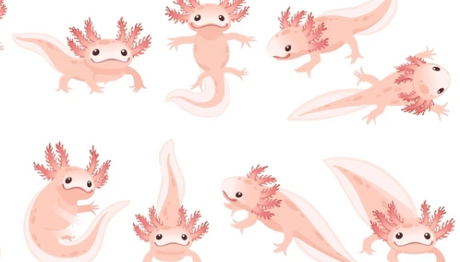Cute:7-Xepu7gqzq= Axolotl

The axolotl, often celebrated for its endearing features and playful demeanor, presents a compelling case for both fascination and concern. Hailing from the unique aquatic environments of Mexico, this neotenic salamander boasts remarkable regenerative abilities, allowing it to heal and regenerate lost limbs and organs at an astonishing rate. As its popularity as a pet increases, so too does the pressing need for conservation efforts to protect its diminishing natural habitats. Understanding the delicate balance between admiration and preservation may reveal deeper implications for biodiversity and ecological health. What steps can be taken to ensure the axolotl’s future?
See also: Cute:1-7nrywhfsm= Wallpaper
Origins of the Axolotl
The axolotl (Ambystoma mexicanum), a unique neotenic salamander, originates from the ancient lake system of Xochimilco in central Mexico, where it has adapted to a highly specialized aquatic environment.
Its habitat preferences include shallow, freshwater areas rich in vegetation.
Beyond its ecological niche, the axolotl holds significant cultural importance for local communities, symbolizing resilience and connection to Mexico’s natural heritage.
Unique Characteristics and Abilities
Renowned for its remarkable regenerative capabilities, the axolotl possesses the ability to fully regenerate lost limbs, spinal cord, heart tissue, and even parts of its brain, making it a subject of extensive scientific research and fascination.
Its habitat preferences include freshwater lakes and canals rich in vegetation, which support its unique lifestyle and contribute to its extraordinary regeneration abilities, highlighting its extraordinary adaptability.
Popularity as Pets and Conservation
Increasing interest in the axolotl’s regenerative abilities has led to its rising popularity as a pet, while simultaneously raising concerns about its conservation status in the wild.
Responsible pet care is essential to minimize the environmental impact of axolotl ownership.
As demand grows, it is crucial to ensure that wild populations are protected, maintaining a balance between fascination and ecological responsibility.
Conclusion
In summary, the axolotl, an organism celebrated for its endearing features and remarkable regenerative prowess, paradoxically faces significant threats in its natural habitat.
While its popularity as a pet continues to rise, one must ponder the irony of a creature adored by many yet endangered in the wild.
The juxtaposition of its whimsical charm against the backdrop of conservation challenges underscores the urgent need to prioritize the protection of axolotl populations, ensuring their survival beyond the confines of aquariums.
See also: Cute:Bnib3bhdn_K= Pfp Aesthetic




